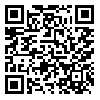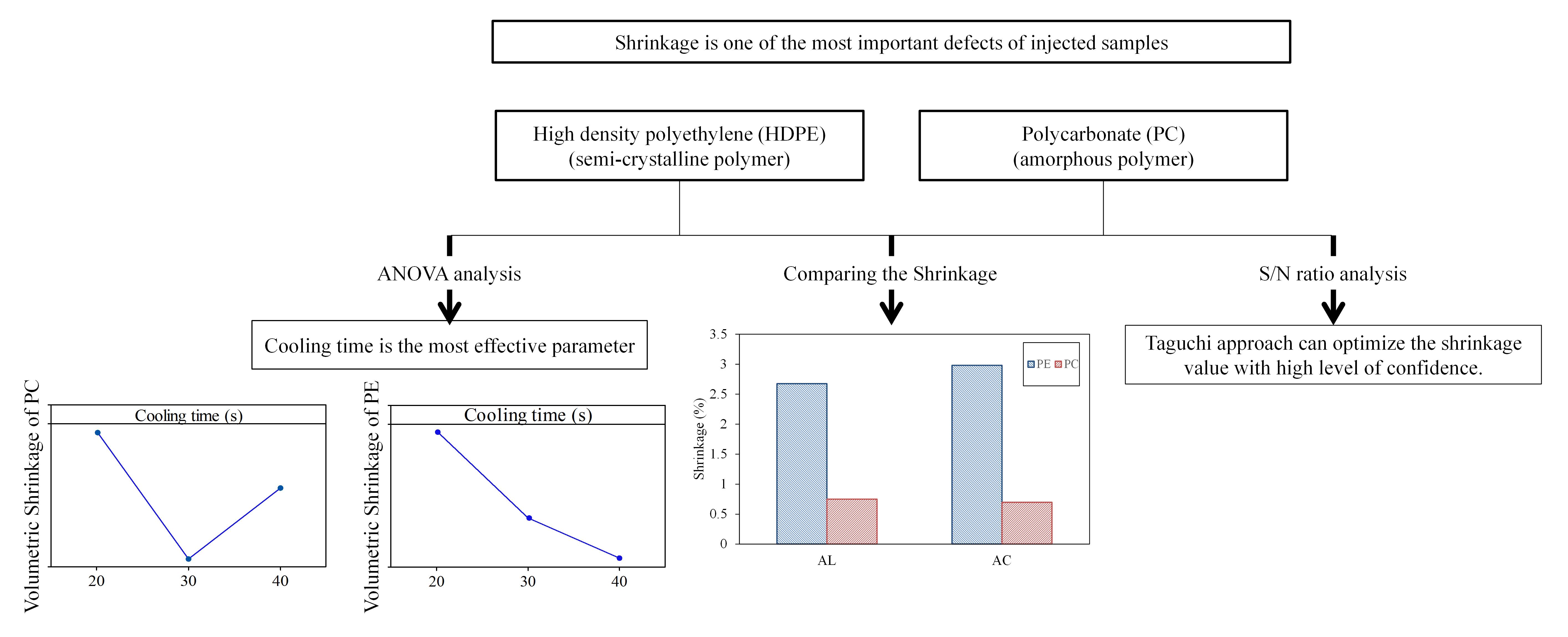Sun, Dec 21, 2025
[Archive]
Volume 15, Issue 4 (December 2018)
IJMSE 2018, 15(4): 41-51 |
Back to browse issues page
Download citation:
BibTeX | RIS | EndNote | Medlars | ProCite | Reference Manager | RefWorks
Send citation to:



BibTeX | RIS | EndNote | Medlars | ProCite | Reference Manager | RefWorks
Send citation to:
Abbasalizadeh M, Hasanzadeh R, Mohamadian Z, Azdast T, Rostami M. Experimental Study to Optimize Shrinkage Behavior of Semi-Crystalline and Amorphous Thermoplastics. IJMSE 2018; 15 (4) :41-51
URL: http://ijmse.iust.ac.ir/article-1-1010-en.html
URL: http://ijmse.iust.ac.ir/article-1-1010-en.html
Abstract: (28732 Views)
Shrinkage is one of the most important defects of injection molded plastic parts. Injection molding processing parameters have a significant effect on shrinkage of the produced parts. In the present study, the effect of different injection parameters on volumetric shrinkage of two polymers (high-density polyethylene (HDPE) semi-crystalline thermoplastics and polycarbonate (PC) as a representative of amorphous thermoplastics) was studied. Samples under different processing conditions according to a L27 orthogonal array of Taguchi experimental design approach were injected. Effect of material crystallinity on the shrinkage of injected samples was investigated. Obtained results revealed that semi-crystalline thermoplastics have larger shrinkage values in comparison with amorphous thermoplastics. Shrinkages of injected samples were also studied along and across the flow directions. Results showed that the flow path can dramatically affect the shrinkage of semi-crystalline thermoplastics. However for amorphous thermoplastics, results showed an independency of obtained shrinkage to flow direction. Analysis of variance (ANOVA) results illustrated that cooling time was the most effective parameter on shrinkage for both PE and PC injected samples; followed by injection temperature as the second important parameter. The optimum conditions to minimize shrinkage of injection molded samples are also achieved using signal to noise ratio (S/N) analysis.
Type of Study: Research Paper |
Subject:
Characterization of Physical and Thermal Properties of Materials
Send email to the article author
| Rights and permissions | |
 |
This work is licensed under a Creative Commons Attribution-NonCommercial 4.0 International License. |








